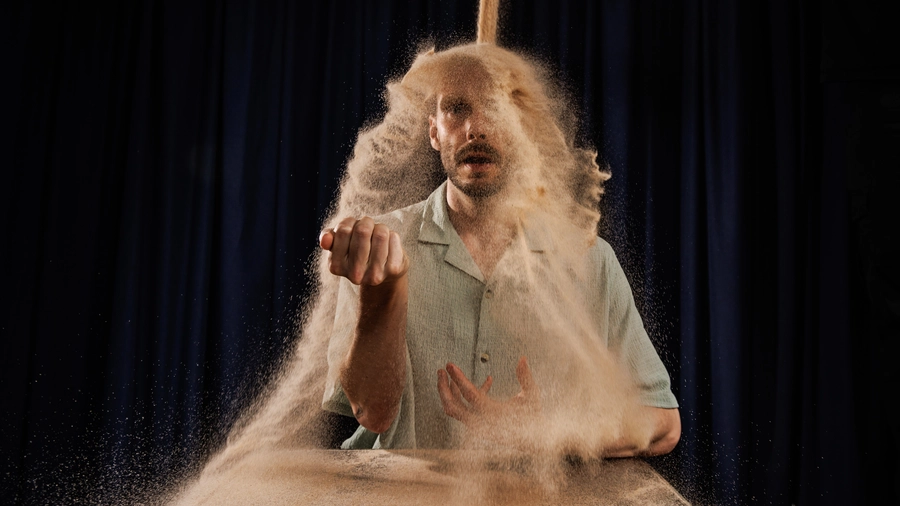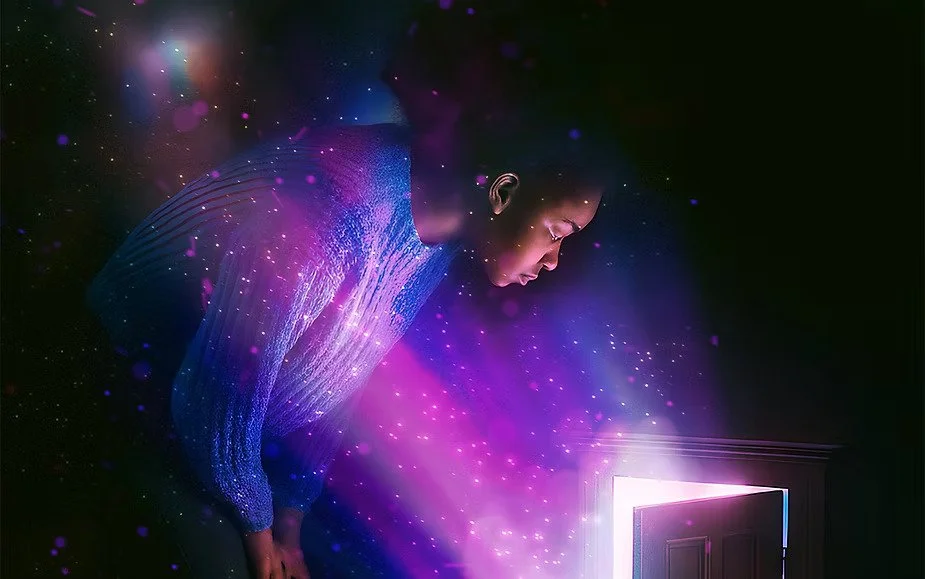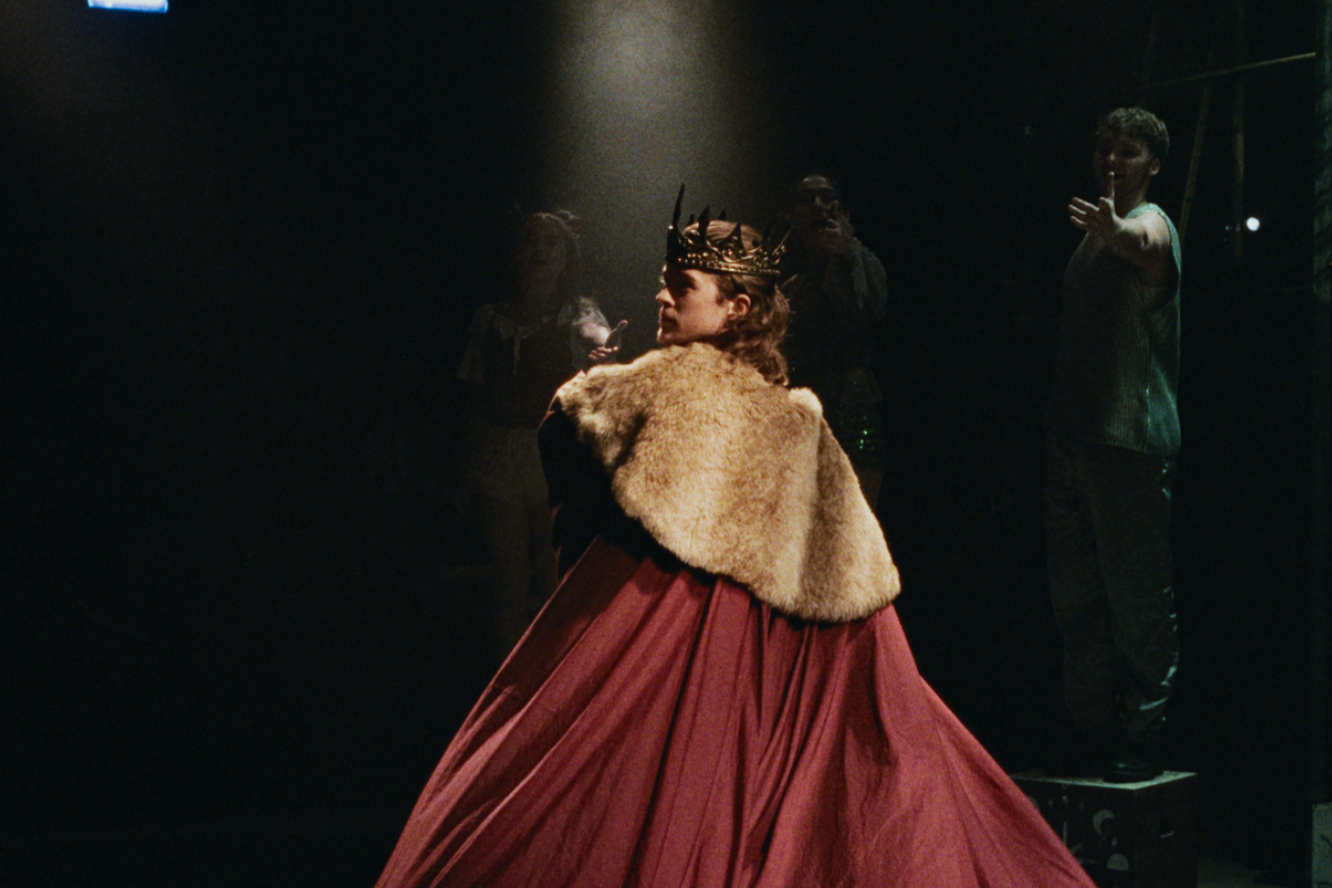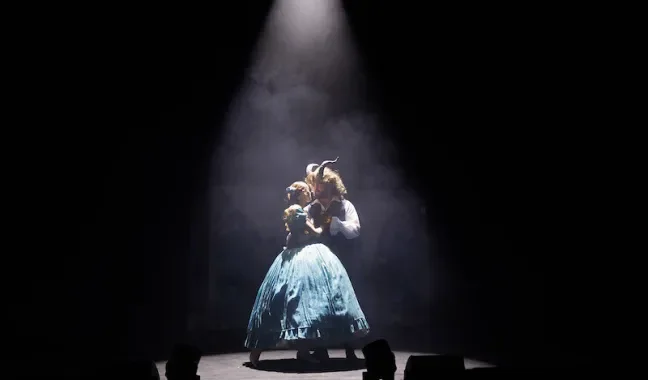SAND by KOOK Ensemble, Jacksons Lane Theatre Review
Written by Paris for Theatre & Tonic
Disclaimer: Gifted tickets in exchange for an honest review
At the beginning of SAND, a fully physical theatre piece told entirely without words, I had a realisation. My work and studies have long involved language-narrative structures, dialogue, and written communication- yet lately, I find myself more drawn to performances that remove words entirely. We’re living in a time of overwhelming noise, constant declarations, opinions, babbly podcasts, and endless streams of criticism. Art, too, often seems to feel the pressure to speak too much, to not leave any space, sometimes filling every moment with a clever joke or self-aware gesture that believes itself to be honest and self-critical, but ends up self-referential and not very useful. Art feels the need to clarify, to declare its meaning upfront, perhaps out of a justified fear of being misunderstood. But SAND dares to do something different. It sits in silence. It lets the movement breathe. It trusts that our emotions will do the listening. And that is its greatest strength.
Performed at Jacksons Lane Theatre, SAND is a wordless physical theatre and circus piece that tells the story of a couple, first in the early stages of love, and then decades later, as one of them is slowly overtaken by dementia. The piece is performed by two sets of performers: two embodying the couple in their youth, and two portraying them in old age. In this dual narrative, we watch them fall in love, share joy and playfulness, and later, face the slow erosion of memory, identity, and balance. It’s a quiet, graceful tragedy told through dance, acrobatics, and gesture.
The cast -Alvaro Grande, Dilly Taylor, Myles MacDonald, and Ebony Gumbs- perform with complete emotional and physical commitment. Their movement is rich in symbolism, and their connection to one another feels deeply honest. The scenes alternate between lively movement and crushing stillness, often mirroring the couple’s emotional journey. One moment we’re watching “first love” unfolding before us, the next we’re witnessing the confusion and helplessness that comes with cognitive decline. There is a particular power in the way the present-day couple is introduced: the dynamic initially reads as maternal and childlike. We assume, perhaps, that this is a mother and her hyperactive son, until fragments of memory emerge and we understand that they were once lovers, partners, equals. And this shift is deeply moving. Dementia not only robs memory, it rearranges roles, disturbs balance, and leaves one person shouldering more than they should.
The show’s design is minimal but filled with meaning. The use of sand -both literal and symbolic-grounds the performance. It evokes a beach, perhaps where the couple first met -or where they live-but also functions as a visual metaphor for time slipping through fingers, for dust gathering in forgotten corners, for the slow decay of things once solid. The lighting design is equally effective, guiding our focus and marking shifts in memory, tone, and mood with elegance. The choreography itself is astonishing in how it captures feelings too complex for language: the suffocating ache of loss, the repetitive frustration of care, the grace of falling in love.
There are very few criticisms to be made here, but if anything occasionally pulled me out of the experience, it was the music. While beautiful and emotionally evocative, there were moments when the score felt a little too directive, almost forcing a reaction rather than allowing one to emerge naturally. Given how powerful the performers were, and how much the movement could carry, the music sometimes felt as though it didn’t quite trust the audience to feel enough on their own.
Another small issue is that, at times, some of the cleverly choreographed segments didn’t flow smoothly into one another. Certain transitions felt abrupt -like well-rehearsed gymnastic exercises inserted between scenes- briefly pulling us out of the emotional atmosphere. A bit more attention to the direction of these physically demanding sequences, especially when props like wooden structures are involved, could help create a more coherent sense of continuity.
But these are minor issues that can never overshadow the show’s importance and quality. SAND is a part of a wider conversation, one about dementia and chronic illness, and how these conditions reshape relationships and identity. By giving emotional shape to an experience that avoids words, it offers important visibility and tenderness to something many people live with but rarely see expressed with such care.
Despite its deeply emotional content -and make no mistake, this is a sad show- it never feels manipulative or melodramatic. Instead, it holds space. It allows grief and memory to exist without being tidied up. It gives the audience time to feel. And for anyone willing to enter a show that doesn’t explain itself, that doesn’t apologise for its emotional depth, this can be a quietly transformative experience.
SAND is not for everyone. It’s for those who welcome discomfort, who don’t mind being left with questions, who are open to sadness as a form of honesty. But for those people, it’s more than a performance—it’s a permission. A space to feel without rushing to resolve. A breath, finally, that doesn’t need words to speak.
SAND plays at Jacksons Lane Theatre until 23 May 2025
★★★★
















